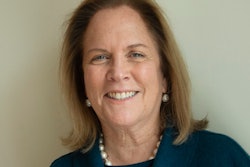 Dr. Kevin Cokley
Dr. Kevin Cokley
Among the most problematic aspects of the NYT article is using the concerns of Black students to criticize the DEI efforts at the University of Michigan. Conservative outlets have weaponized Black students’ legitimate concerns about declining Black student enrollment as an indictment of the amount of money spent on DEI initiatives, as well as an overall indictment of DEI. A day after the New York Times article, a Fox News article was published titled “Black students dismiss University of Michigan’s DEI programs as ‘well-meaning failure’: Report.”
I am skeptical that highlighting Black students’ criticisms of DEI initiatives, especially by conservative critics of DEI, is based in a genuine concern about the welfare of Black students. If these critics were genuinely concerned about the issues raised by Black students they would be just as vocal in proposing solutions, but of course we do not see evidence of this. Instead, they use the age-old tactic of divide and conquer by trying to pit Black students against Black faculty and staff who are disproportionately in the roles of Chief Diversity Officers.
Using Black students to criticize DEI is a cynical and disingenuous tactic whose primary purpose is to ultimately discredit all DEI initiatives. The concerns raised about the effectiveness of DEI initiatives should be addressed; however, these issues reflect systemic challenges of higher education rather than a failure of the University of Michigan’s DEI efforts.
While the NYT article is presented as an objective piece of journalism, there are many factual problems and biases in the article, some of which were addressed by a response from the University of Michigan’s Chief Diversity Officer Dr. Tabbye Chavous. The NYT is not immune from publishing inaccuracies, as evidenced when a scholar of African American life fact-checked some statements and disputed a central claim about slavery made in the 1619 Project. However, the NYT still made the decision to publish the incorrect statement. Similarly, when Chavous fact-checked more than 130 questions, the fact checked items were ignored in the final article. In both instances, it appears there was an underlying agenda which, in the case of DEI at Michigan, was intended to portray DEI efforts in a negative light.
The low enrollment of Black students at flagship public universities, especially the “public Ivies”, has long been an issue in higher education. The percentages of Black students at schools comparable to the University of Michigan, such as UC Berkeley, UCLA, UNC Chapel Hill, the University of Virginia, and the University of Texas at Austin, range from around 3 to 8%. While there are always concerns that the percentages of Black students at these institutions should reflect or approximate their representation at the state level, generally speaking their percentages never reach state-level percentages.
















